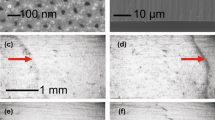Abstract.
Molecular sieves, such as nanoporous AlPO4-5, can host a wide variety of laser active dyes. We embeded pyridine-2 molecules as a representative of a commercially available dye which fits into the channel pores of the host matrix. Many efficient dye molecules, such as rhodamines, do not fit into the pores. But modifying the structure of the dyes to appear like the used templates allows us to increase the amount of encapsulated dyes. The properties of resulting microlasers depend on size and shape of the microresonators, and we discuss a model for microscopic hexagonal ring resonators. In terms of pump needed to reach lasing threshold molecular sieve microlasers are comparable to VCSELs. For dyes that fit into the pores we observed a partial regeneration of photo-induced damage.
Similar content being viewed by others
Author information
Authors and Affiliations
Additional information
Received: 24 September 1999 / Revised version: 26 October 1999 / Published online: 23 February 2000
Rights and permissions
About this article
Cite this article
Braun, I., Ihlein, G., Laeri, F. et al. Hexagonal microlasers based on organic dyes in nanoporous crystals . Appl Phys B 70, 335–343 (2000). https://doi.org/10.1007/s003400050054
Issue Date:
DOI: https://doi.org/10.1007/s003400050054




